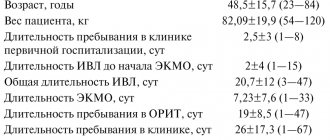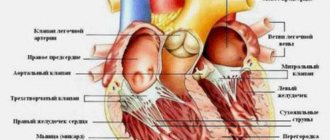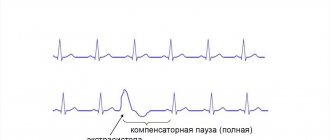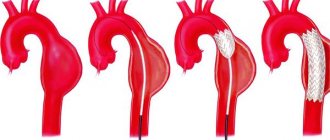Causes
There are many causes of endocarditis:
- infections;
- injuries;
- allergic diseases;
- intoxication;
- connective tissue damage.
Often endocarditis develops not as an independent disease, but as a consequence of other pathologies in the body. Both men and women are equally susceptible to the disease. It can occur at any age. Currently, about 130 types of microorganisms are known that can provoke endocarditis.
2. Reasons
Almost all available sources name the main (or only) cause of rheumatic heart disease as experienced acute rheumatic fever - various variants of rheumatic carditis, i.e. rheumatic inflammation of certain structural elements of the heart. In turn, the acute development of cardiac rheumatism is associated with the pathogenic activity of hemolytic streptococcus. However, in special publications one can find data that from 30% to 50% of patients do not have such episodes in their history. Even if we assume that some acute rheumatic fevers were simply not diagnosed or recorded, the percentages are too high to speak about the complete clarity of the causes of chronic rheumatic heart disease.
Risk factors usually include being female, frequent respiratory infections against the background of general immune weakness, heredity, and systematic long-term stay in cold rooms with high humidity.
Visit our Cardiology page
Symptoms
The disease may develop asymptomatically for some time. It is also characterized by acute and chronic stages. There is an extensive list of symptoms, which makes it difficult to make a correct diagnosis.
The clinical picture of endocarditis is expressed in the following symptoms:
- elevated temperature;
- chills;
- sweating;
- enlarged lymph nodes;
- signs of intoxication (weakness, headaches);
- change in skin color (pallor, spots);
- changing the shape of nails;
- arthritis of large joints;
- damage to the heart valves;
- increased thrombus formation;
- signs of pericarditis;
- systemic damage to organs (kidneys, central nervous system, etc.);
- progressive heart failure.
The manifestation of the disease is individual and depends on the general condition of the patient’s body and the severity of the pathological process.
Rheumatism (acute rheumatic fever) - symptoms and treatment
The main, and in most cases, the only manifestation of rheumatism is heart damage caused by inflammation - rheumatic carditis (carditis). With rheumatic carditis, simultaneous damage to the myocardium and endocardium occurs. This is the main syndrome that determines the severity and outcome of the disease.
In the case of carditis, adult patients experience discomfort in the heart area, interruptions in heart rhythm, and rapid heartbeat. There may be mild shortness of breath on exertion [4][5][7]. In children, this pathology is more severe: the disease begins with palpitations, shortness of breath at rest and during exercise, and constant pain in the heart area [7]. However, according to the observations of most pediatricians, children rarely present subjective complaints. Only 4-5% of pediatric patients report discomfort in the heart area at the onset of the disease. But about 12% of patients complain of tiredness and tiredness, especially after school [2][10].
With ARF, it is possible to develop rheumatic arthritis , which affects the musculoskeletal system. This is the second most common clinical manifestation of ARF. The prevalence of rheumatic arthritis varies according to various sources from 60 to 100% [3]. Patients complain of pain in large joints, inability to move, and enlargement of joints [4]. Polyarthritis can occur alone or in combination with another syndrome, most often with carditis. A feature of the disease is rapid and complete reverse development with timely administration of antirheumatic therapy.
Rheumatic lesions of the nervous system occur mainly in children. It is worth noting such a disease as “minor chorea”, or rheumatic chorea (Sydenham’s chorea, St. Vitus’s dance). It is manifested by emotional instability and violent, erratic, involuntary movements (hyperkinesis) of the upper torso, upper limbs and facial muscles [1][2].
Rheumatic chorea occurs in 12-17% of children; girls aged 6 to 15 years are more often affected [11]. The onset is gradual: patients experience tearfulness, irritability, twitching of the muscles of the trunk, limbs, and face. They complain of unsteady gait and impaired handwriting. The duration of chorea is from 3 to 6 months. It usually ends with recovery, but in some patients an asthenic state (increased fatigue, mood instability, sleep disturbance), decreased muscle tone, and slurred speech persist for a long time [1][2].
Ring-shaped erythema is a rare but specific clinical manifestation of ARF. It appears during the period of greatest activity of the process in approximately 7-17% of children. Ring-shaped erythema is a non-pruritic, pale pink rash. It does not rise above the skin level and appears on the legs, stomach, neck, and inner surface of the arms. The elements of the rash look like a thin rim that disappears when pressed. The diameter of the elements ranges from a few millimeters to the width of a child’s palm.
Subcutaneous rheumatic nodules are also a rare sign of ARF. These are round, dense, painless formations, varying in size from 2 mm to 1-2 cm. They are formed in places of bony protrusions (along the spinous processes of the vertebrae, the edges of the shoulder blades) or along the tendons (usually in the ankle joints). Sometimes they appear as clusters consisting of several nodules. Often combined with severe carditis.
Additional clinical manifestations of ARF include abdominal syndrome (acute abdominal pain) and polyserositis - inflammation of the serous membranes of several body cavities (pleura, pericardium, peritoneum, etc.). These syndromes develop in children against the background of high inflammatory activity. Abdominal syndrome, caused by peritonitis (inflammation of the peritoneum), is manifested by acute diffuse pain in the abdomen, sometimes accompanied by nausea and vomiting, bloating, stool and gas retention.
pleurisy (inflammation of the serous membrane covering the surface of the lungs) may develop Pleurisy can be dry or exudative. Dry pleurisy is an inflammation of the pleural layers with the formation of fibrin on them. Exudative - inflammation accompanied by the accumulation of exudate of various types in the pleural cavity. With ARF, dry pleurisy is more often observed. Currently, this manifestation of ARF is rarely observed. It may be clinically asymptomatic or accompanied by pain during breathing, dry cough, and sometimes a pleural friction noise is heard [5][6][7].
Treatment
The set of therapeutic measures depends on the causes of endocarditis. Treatment includes eliminating inflammation and controlling symptoms. Often the patient requires surgery to remove the affected area.
If infective endocarditis is suspected, the patient must be treated in a hospital setting. To fight the infection, the doctor prescribes medications in accordance with the identified type of virus. These can be antibiotics, antiviral drugs. Drugs to enhance immunity are also indicated.
After endocarditis, you must visit your doctor monthly for six months. In the future, inspection by a specialist should be performed at least 2 times a year.
4.Treatment
Therapeutic regimens may vary significantly depending on the clinical characteristics of a particular case. The most general principles include the prescription of antiarrhythmic and antihypertensive drugs, cardiac glycosides, anticoagulants - in general, the primary task is to unload the valve(s) affected by rheumatic inflammation and prevent thrombosis.
However, even with a competent and adequate therapeutic strategy, chronic rheumatic heart disease can be aggravated by further complications: progression of heart failure, thromboembolism (including in the blood supply to the brain, i.e., ischemic stroke develops), exacerbations of smoldering rheumatic myocarditis, etc. P.
If conservative treatment is ineffective and/or an alarmingly rapid increase in heart failure is observed, they resort to one of the methods of cardiac surgical correction (usually the question of valve replacement is raised).
Prevention
Preventive measures to prevent endocarditis include giving up bad habits, paying close attention to health, and timely treatment of emerging infections.
If you have a chronic form of the disease, you should regularly visit a cardiologist and undergo examination.
Endocarditis is a serious heart disease that can occur in both children and adults. Therefore, if your health condition worsens, it is necessary to seek help from a qualified specialist as soon as possible. At the medical center you can undergo a full examination of the body in the shortest possible time. Based on the clinical picture, the doctor will make a diagnosis and prescribe effective treatment.
1.General information
The rheumatic group of diseases is united by a common etiopathogenesis and affected “targets”: there is a systemic pathology of connective tissue affecting the whole organism and an associated inflammatory process, usually in large joints. However, the most dangerous consequence of the rheumatic process is damage to the myocardium, which always occurs with rheumatism - to varying degrees of severity (according to the well-known and very accurate medical saying, “rheumatism licks the joints and bites the heart”). In some cases, rheumatic inflammation occurs in the form of acute fever, which, after relief of the main symptoms, is complicated by the formation of a specific heart defect. This refers to damage and disruption of the complex valvular biomechanics of the myocardium, which normally ensures its uninterrupted pumping function. In such cases they talk about chronic rheumatic heart disease (CRHD).
The problem is very serious throughout the world for a number of reasons. Firstly, rheumatic heart disease is quite widespread: in WHO statistics it ranks fourth among all cardiovascular diseases. Secondly, CRHD is one of the main factors of high mortality in this category. Thirdly, rheumatic heart disease usually develops in children, adolescents and young adults, i.e. affects the most promising, active and able-bodied part of the population, often leading to disability and “excluding” this sample from social functioning (at least, sharply limiting its activity and reducing the quality of life).
A must read! Help with treatment and hospitalization!
How is rheumatism treated?
Treatment of rheumatism consists of three stages:
- Treatment in a hospital.
- Spa treatment.
- Clinical observation, treatment and prevention.
Inpatient treatment is carried out in the active phase of the disease. It implies:
- The use of medications (corticosteroids, steroid hormones, salicylates) and physiotherapeutic agents.
- Elimination of foci of streptococcal infection.
- Bed rest, the duration of which depends on the severity of the disease and lasts from one to six months.
- Balanced nutrition , which involves limiting salt, liquid and carbohydrates - sugar, white bread and potatoes.
- Physiotherapy.
What causes rheumatism?
The cause of the development of this disease is an acute infection - active reproduction in the body of β-hemolytic streptococcus group A. This occurs as a complication after tonsillitis, pharyngitis, streptococcal cervical lymphadenitis.
First of all, rheumatism develops in individuals with a hereditary predisposition and increased sensitivity to streptococcal infection.
Streptococcus produces toxins that are dangerous to the heart, kidneys, liver, brain and other internal organs.










